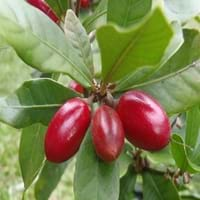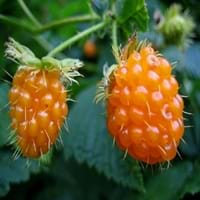Health Benefits
Good for diabetics, Improves well-being, Miraculin/miracle fruit makes sour things taste sweet
Cancer prevention, Improves stomach health, Weight loss properties
General Benefits
Has taste modifying effect
Anti oxidant properties, Digestive aid, Eye care, Healing of wounds, Improves eye vision, Maintains healthy cholesterol level, Strengthens bones
Skin Benefits
NA
Anti-aging benefits, Reduces wrinkles
Hair Benefits
NA
Protects hair, Regulates hair growth
Allergy Symptoms
Itching, Skin rash
Abdominal pains, Itching, Swelling of mouth, tongue or lips
Side Effects
Changes taste of food eaten after this fruit, Coagulation
Allergic reaction
Best Time to Eat
As a snack in the late afternoon, Eat the fresh ones, avoid mixing with any other foods, don't eat after meal., Morning time (before lunch)
Best if taken as a breakfast (or empty stomach), As a snack in the late afternoon, Don't eat after meal, Morning time (before lunch)
Protein to Carb Ratio
Not Available
Vitamin A (Retinol)
Not Available
Vitamin B1 (Thiamin)
Not Available
Vitamin B2 (Riboflavin)
Not Available
Vitamin B3 (Niacin)
Not Available
Vitamin B5 (Pantothenic Acid)
Not Available
Vitamin B6 (Pyridoxin)
Not Available
Vitamin B9 (Folic acid)
Not Available
Vitamin C (Ascorbic Acid)
Vitamin K (Phyllochinone)
Not Available
Water Content
Not Available
Calories in Fresh Fruit with Peel
Not Available
Calories in Fresh Fruit without Peel
Not Available
Not Available
Calories in Frozen Form
Not Available
Not Available
Calories in Dried Form
Not Available
Not Available
Calories in Canned Form
Not Available
Not Available
Calories in Juice
Not Available
Calories in Jam
Not Available
Calories in Pie
Not Available
Season
Monsoon
All seasons
Varieties
Gymnema Sylvestre and Thaumatococcus Daniellii
Golden ruby and Olympic Double
Color
Dark red
Pink, Pink red, Salmon, Salmon yellow
Inside Color
Greyish-white
Pink
Origin
West Africa
North America
Soil Type
Well-drained
Loam
Climatic Conditions
Rainfall
Moist
Facts about
- The name 'Miracle' because of the magical experience you get after eating it.
- When you have lemon after eating this fruit, it tastes sweet as if it is added with sugar.
- It is also used as natural sweetener.
- The name salmon berry is due of the resemblance with 'salmon roe'.
- In 1 kg of fruit, there are total 315,250 seeds.
- Salmon berry tree leaves act as an excellent replacement for tea.
Cocktails
Yes
Not Available
Top Producer
NA
United States of America
Other Countries
NA
Canada, Mexico
Top Importer
Not Available
Not Available
Top Exporter
United States of America
Not Available
Botanical Name
Synsepalum Dulcificum
Rubus spectabilis
Synonym
Miracle Berry, Miraculous Berry and Sweet Berry
Not Available
Subkingdom
Tracheobionta
Tracheobionta
Division
NA
Magnoliophyta
Subclass
Asteridae
Rosidae
Family
Sapotaceae
Rosaceae
Species
S. dulcificum
R. spectabilis
Generic Group
Not Available
Not Available
Difference Between Miracle fruit and Salmonberry
We might think that Miracle fruit and Salmonberry are similar with respect to nutritional value and health benefits. But the nutrient content of both fruits is different. Miracle fruit and Salmonberry Facts such as their taste, shape, color, and size are also distinct. The difference between Miracle fruit and Salmonberry is explained here.
The amount of calories in 100 gm of fresh Miracle fruit and Salmonberry with peel is Not Available and 47.00 kcal and the amount of calories without peel is Not Available and Not Available respectively. Thus, Miracle fruit and Salmonberry belong to and category.These fruits might or might not differ with respect to their scientific classification. The order of Miracle fruit and Salmonberry is Ericales and Rosales respectively. Miracle fruit belongs to Sapotaceae family and Salmonberry belongs to Rosaceae family. Miracle fruit belongs to Synsepalum genus of S. dulcificum species and Salmonberry belongs to Rubus genus of R. spectabilis species. Beings plants, both fruits belong to Plantae Kingdom.









